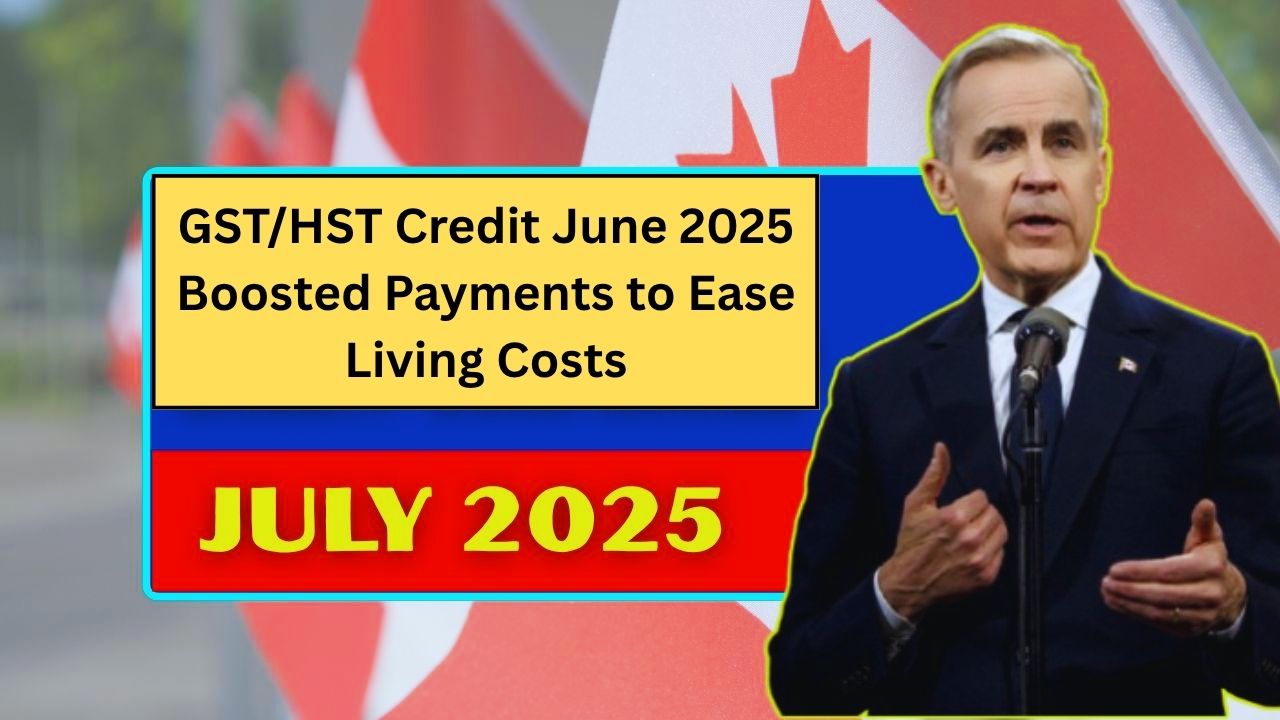Canadians with low to modest incomes are set to receive a helping hand through the GST/HST credit, a non-taxable payment designed to offset the cost of federal sales taxes. With living costs on the rise, this credit offers timely relief for individuals and families. For the payment cycle ending in June 2025, the Canada Revenue Agency (CRA) has confirmed quarterly disbursements, including a slight increase in amounts starting in July 2025. This article explains the payment dates, eligibility criteria, and updated amounts to help you plan ahead.
What is the GST/HST Credit?
The GST/HST credit is a quarterly payment aimed at supporting Canadians who face financial challenges due to taxes on goods and services. Whether you’re paying GST (Goods and Services Tax) or HST (Harmonized Sales Tax) depends on your province, but the credit applies across Canada. It’s automatically calculated when you file your income tax return, so there’s no need for a separate application. The credit is tailored to your income, marital status, and family size, ensuring those who need it most get the most help. For the period from July 2024 to June 2025, payments are based on your 2023 tax return.
Payment Dates for 2025
The CRA issues GST/HST credit payments four times a year, typically on the first Friday of January, April, July, and October. For 2025, the confirmed payment dates are:
| Date | Notes |
|---|---|
| January 3 | Based on 2023 tax return |
| April 4 | Based on 2023 tax return |
| July 4 | Includes 2.7% increase, based on 2024 tax return |
| October 3 | Based on 2024 tax return |
If you’ve set up direct deposit, expect the payment to appear in your bank account on these dates, labelled as “GST/HST tax credit” or “Canada FPT.” Cheque payments may take up to 10 business days to arrive. If you miss a payment, check your CRA My Account or call 1-800-387-1193 after waiting 10 business days.
Updated Payment Amounts
For the July 2024 to June 2025 cycle, the maximum annual GST/HST credit amounts remain unchanged until the July 2025 payment, when a 2.7% increase will apply. Here’s what you could receive based on your situation:
-
Single person with no children: Up to $519 per year ($129.75 per quarter).
-
Married or common-law couple: Up to $680 per year ($170 per quarter).
-
Each child under 19: $179 per year ($44.75 per quarter).
For example, a couple with two children could receive up to $1,038 annually ($259.50 per quarter). Starting in July 2025, these amounts will rise slightly due to the announced 2.7% adjustment. Additionally, a one-time $250 relief payment is scheduled for March 2025 to further support low-income households. Payments are reduced based on your adjusted net income, with thresholds at $27,729 for single individuals and $34,661 for couples or single parents.
Who is Eligible?
To qualify for the GST/HST credit, you must meet these requirements:
- Be a Canadian resident for tax purposes.
- Be at least 19 years old by the payment date, or if under 19, have a spouse, common-law partner, or a child you live with.
- File your annual income tax return.
Newcomers to Canada need to submit specific forms, such as RC66 (if you have children) or RC151 (if you don’t), to apply. If your circumstances change like getting married, having a child, or moving notify the CRA to ensure your payments are accurate. Overpayments may occur if you fail to update your details, and the CRA could recover these from future benefits.
Additional Provincial Credits
Some provinces offer extra sales tax credits combined with the federal GST/HST payment. For example, Ontario’s Trillium Benefit provides up to $360 per adult and child, while the Northwest Territories’ cost of living offset varies by postal code zone. These credits are also non-taxable and aim to make life more affordable. Check with your provincial government or the CRA for details on what’s available where you live.
Making the Most of Your Credit
The GST/HST credit is a small but meaningful way to ease financial strain. Whether you use it for groceries, bills, or savings, it’s a tool to help you manage rising costs. To ensure you receive it, file your taxes on time and keep your CRA account updated. For newcomers or those unsure about eligibility, the CRA’s Child and Family Benefits Calculator can estimate your credit. With the next payment arriving on April 4, 2025, and a boost coming in July, now’s the time to confirm your details and make the most of this support.



